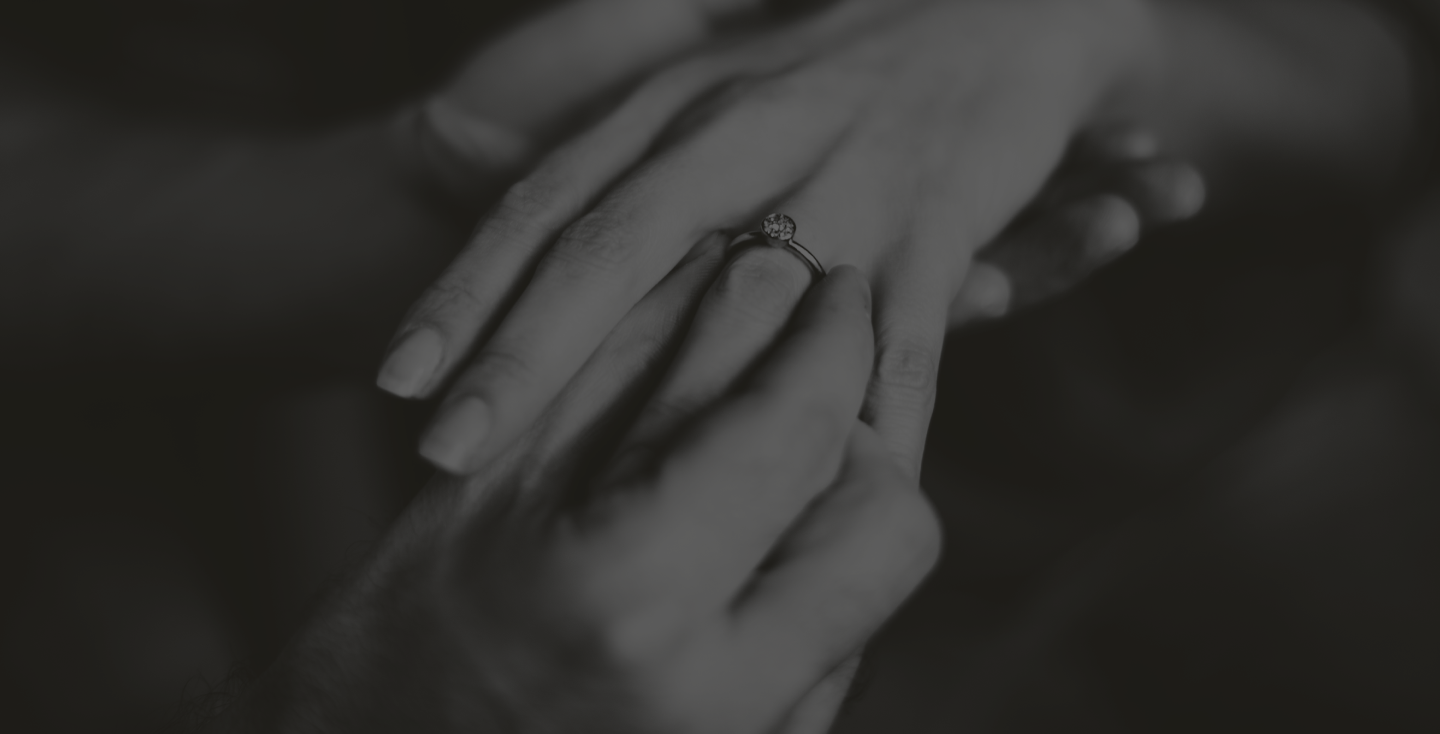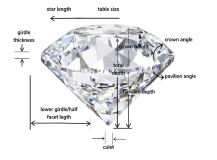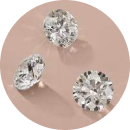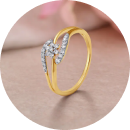

Cut
The cut of a diamond not only determines its shape, but also plays a crucial role in how well the diamond reflects light back to the viewer. A diamond that is cut well will appear highly brilliant and fiery, while one that is poorly cut can appear dull and lifeless, irrespective of its clarity or color.
Apart from exhibiting greater brilliance, a well-cut diamond also tends to appear larger than a diamond of the same carat weight that has been cut more deeply. An "ideal" diamond is one that has increased brilliance and diameter compared to more deeply-cut diamonds.
An Ideal Cut Diamond is a diamond that has been cut to ideal proportions and angles, and has excellent ratings for symmetry and polish. This type of diamond is perfectly proportioned to refract light, producing the fire and brilliance that is visible from the diamond's table and crown.
When light hits a diamond's surface, it can either reflect off the polished stone's table or enter the diamond. A well-cut diamond displays three different properties: brilliance, dispersion, and scintillation. The light that is reflected off the diamond is known as its brilliance. Some of the light rays that travel through a diamond are separated into flashes of color, known as dispersion. The result of this separation is known as fire. Scintillation refers to flashes of color that can be observed when a diamond is moved back and forth.





